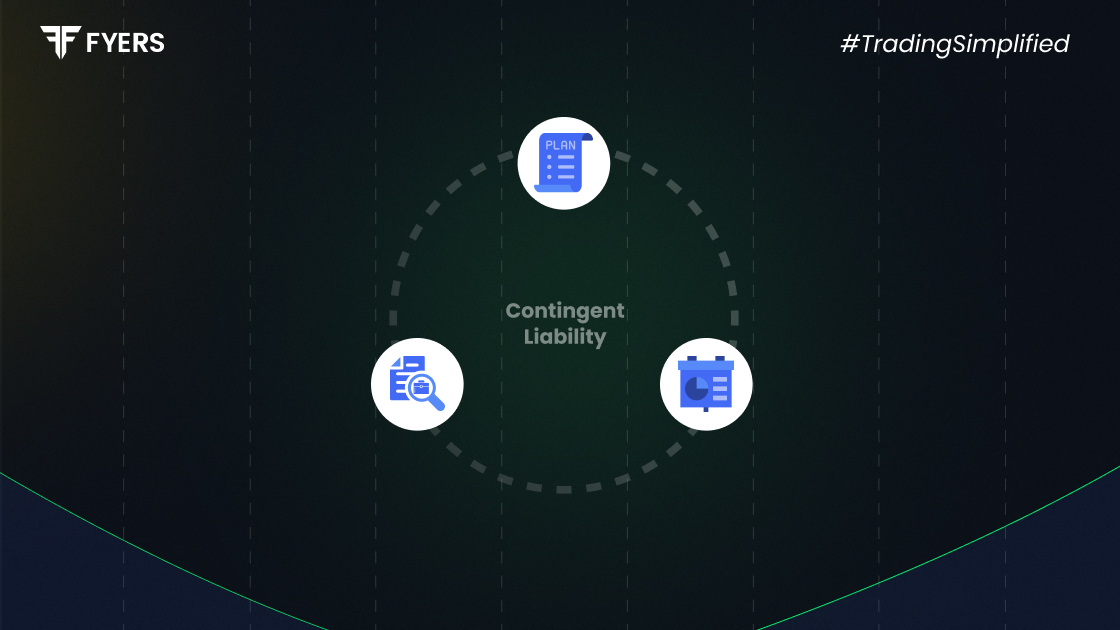

 30 Jul, 2025
30 Jul, 2025
 4 mins read
4 mins read

Understanding contingent liabilities is essential for anyone studying accounting or evaluating a company’s financial health. These are potential obligations that may or may not become actual liabilities, depending on future events. In this blog, we explore what contingent liabilities are, the types, their importance, and how they differ from regular liabilities.
A contingent liability is a possible financial obligation that might arise in the future based on the outcome of a specific uncertain event. It is not guaranteed to happen, and its occurrence depends on future events that are not entirely in the entity's control.
For example, if a company is involved in a lawsuit, and the result is still pending, the company may have to pay damages if the court rules against it. This obligation is not certain at the moment, hence it is treated as a contingent liability.
Accounting standards such as Ind AS and IFRS require businesses to disclose contingent liabilities in their financial statement notes if the possibility of an outflow of resources is not remote.
Contingent liabilities can vary based on the source of uncertainty. Here are some common types:
Pending Lawsuits: If a company is being sued, it may have to pay compensation, depending on the legal outcome.
Loan Guarantees: If a business guarantees another entity's loan and that entity defaults, the guarantor may have to repay the loan.
Tax Disputes: Companies may face additional tax liabilities if a dispute with tax authorities is resolved unfavourably.
Product Warranties: Businesses offering warranties may need to bear repair or replacement costs if products are returned.
Environmental Obligations: Firms involved in sectors like mining may have future costs related to environmental damage.
Though not always recorded directly on the balance sheet, contingent liabilities are crucial for several reasons:
Transparency: Disclosing them in financial statements ensures full transparency for investors, regulators, and auditors.
Risk Assessment: They provide a clearer picture of the potential risks that a company might face.
Investor Decision-Making: Investors use this information to evaluate the financial stability and risk exposure of a business.
Credit Evaluation: Lenders consider contingent liabilities before granting loans, as they can affect the borrower's ability to repay.
To better understand how contingent liabilities work, let’s look at a few real-life examples:
Litigation: A software company is being sued for copyright infringement. If the case goes against them, they may have to pay ₹10 crore in damages. The liability is contingent on the court’s decision.
Loan Guarantee: Company A guarantees a loan of ₹50 lakh for its subsidiary. If the subsidiary fails to repay, Company A becomes liable.
Warranty Claim: A manufacturer offers a one-year warranty on its appliances. If customers return products within the warranty period, the company may incur repair or replacement costs.
Tax Appeal: A firm is under scrutiny by tax authorities for its past filings. If the appeal fails, the company could owe additional taxes and penalties.
|
Basis of Comparison |
Liability |
Contingent Liability |
|---|---|---|
|
Certainty |
Confirmed and must be settled |
Uncertain and depends on future events |
|
Recording in Books |
Always recorded in financial statements |
Recorded only if probable and measurable |
|
Examples |
Outstanding loans, trade payables |
Lawsuits, guarantees, tax disputes |
|
Impact on Financials |
Direct impact on financial position |
May or may not affect financial position |
|
Disclosure Requirement |
Mandatory in financial statements |
Disclosed in notes unless remote |
Contingent liabilities are potential obligations that depend on uncertain future events. While they do not always appear directly on the balance sheet, they provide crucial insights into a company’s risk exposure. Disclosing them accurately ensures better transparency and informed decision-making for investors and stakeholders. Understanding these liabilities helps in evaluating a company’s true financial health.
A contingent liability is a possible future obligation that depends on the outcome of an uncertain event. For example, if a company might have to pay in a lawsuit depending on the court’s decision, it is a contingent liability.
No, it is not shown directly in the balance sheet. However, if the obligation is likely and can be estimated, it may be disclosed in the notes to the financial statements.
A provision is a definite liability with uncertain timing or amount and is recorded in the accounts. A contingent liability is a possible obligation and is only disclosed unless it becomes probable and measurable.
A contingent liability is recorded in the books only if it is probable that an outflow of resources will be required and the amount can be reasonably estimated. Otherwise, it is disclosed in the notes to the accounts.
Calculate your Net P&L after deducting all the charges like Tax, Brokerage, etc.
Find your required margin.
Calculate the average price you paid for a stock and determine your total cost.
Estimate your investment growth. Calculate potential returns on one-time investments.
Forecast your investment returns. Understand potential growth with regular contributions.